- JST Home
- /
- Strategic Basic Research Programs
- /
 ACT-X
ACT-X- /
- Research Director/
- Trans-Scale Approach Toward Materials Innovation/
- [Trans-scale] Year Started : 2024
[Trans-scale] Year Started : 2024
Daisuke Aoki
Innovative Toughening Strategy for Plastics Based on Ion Dynamics
Grant No.:JPMJAX24D1
Researcher
Daisuke Aoki

Assistant Professor
Faculty of Science and Technology
Tokyo University of Science
Outline
In order to make transportation equipment lighter and more durable, there is a need to establish toughening technology for plastics that achieves both high elastic modulus and toughness. In this research, we focus on the toughening of plastics through weak ion interactions and elucidate the ion dynamics of intermediate structures that link nanoscale molecular design and macroscale mechanical properties. We aim to construct a new model and molecular design guidelines for toughening plastics.
Keishi Akada
High-speed phenomena of colloids investigated by synchrotron radiation
Grant No.:JPMJAX24D2
Researcher
Keishi Akada
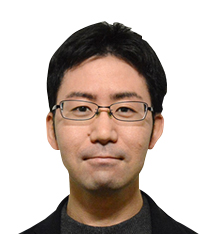
Tenure-track researcher
Diffraction and Scattering Division
Japan Synchrotron Radiation Research Institute
Outline
Particles in colloidal dispersions, ranging nm to µm size, are difficult for structural measurements due to their intermediate size, which is not suitable for X-ray diffraction and optical microscopy. To understand the physical properties of such mesoscale materials, this project conducts on structural measurements of colloidal suspensions using small-angle/ultra-small-angle X-ray scattering (SAXS/USAXS). A combination of time-resolved rheology and SAXS measurements with high-brilliance synchrotron radiation provide a deep insight into the fast response phenomena of colloids in high-speed flow.
Hiroto Ozaki
A Molecular Theoretical Approach for Precise Control of Phase Separation
Grant No.:JPMJAX24D3
Researcher
Hiroto Ozaki
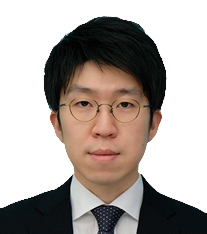
Researcher
R&D Center
Mitsui Chemicals, Inc.
Outline
Phase separation in polymer systems has notable importance in biological phenomena. The present project aims to construct a molecular theory that can accurately predict the phase-separation structure of polymer systems by considering their molecular-scale properties without incurring excessive computational costs. Based on this theory, the present project seeks to establish a technique to precisely control the phase-separation structure of polymer systems at meso- or macro-scales by tuning molecular-scale properties, thereby contributing to accelerating the development of innovative new materials.
Miki Kajihara
Creation of innovative structural materials by hypervelocity impact of nanoparticles
Grant No.:JPMJAX24D4
Researcher
Miki Kajihara

Ph.D. Student
Graduate school of science and engineering
Chuo University
Outline
The purpose of this research is to develop hypervelocity nanoparticle injection technology and particle flight speed measurement technology, and to achieve longer life and higher functionality in structural materials. We will establish a dynamic experiment method for nano-size and nanoseconds using laser ablation, and work to create new phenomena by utilizing the spatial and time scale dependence in particle impact. In particular, we will focus on structural materials with hierarchical structures, and consider improving macroscopic mechanical functions by introducing defects of various scales.
Yusuke Koide
Scission and recombination properties of surfactant micelles in flowing solutions for turbulence control
Grant No.:JPMJAX24D5
Researcher
Yusuke Koide

Researcher (JSPS Post-Doc)
Graduate School of Engineering
Nagoya University
Outline
There has been a necessity for controlling turbulent flows flexibly to improve energy efficiency. This research focuses on turbulence suppression by a small amount of surfactants. This research will propose a novel guideline for turbulence control based on the control of micellar structures by revealing how surfactant micelles break and recombine in flowing solutions.
Ryuhei Kohno
Elasto-Magnonics on two-dimensional layered magnets
Grant No.:JPMJAX24D6
Researcher
Ryuhei Kohno
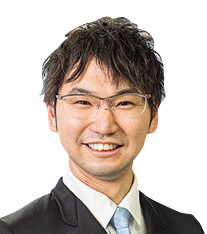
Assistant Professor
International Center for Synchrotron Radiation Innovation Smart
Tohoku University
Outline
As exampled by a transistor, reversible control of physical properties leads directly to the development of innovative devices. In this study, we use a generic manipulation, that is, “strain” to control the magnetic phases and consequently the associated dynamical properties in a reversible manner. By focusing on two-dimensional layered materials with mechanical properties superior to those of bulk materials, we will realize wide-band magnetic resonance frequency modulation ranging from GHz to THz by mechanical strain, thereby paving the way to ultrafast magnetic devices, or “elastomagnonics”.
Hikaru Saito
Operando Spectroscopy of Photogenerated Active Species for Fabricating Efficient Reaction Sites of Photocatalyst Surfaces
Grant No.:JPMJAX24D7
Researcher
Hikaru Saito
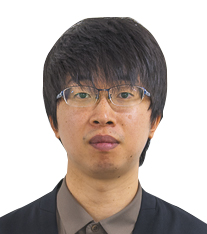
Project Assistant Professor
Institute for Molecular Science
National Institutes of Natural Sciences
Outline
Photocatalytic conversion of ubiquitous resources is a promising chemical technology for achieving sustainable energy conversion and production of valuable chemicals. For developing efficient photocatalytic systems, photocatalyst surfaces should be fabricated to promote surface redox reactions. However, it remains a challenge to optimize the photocatalyst surfaces due to the lack of microscopic insight into the photogenerated active species. In this research project, I employ various operando spectroscopies for identifying active species in the photocatalytic conversion of methane and water. In particular, I develop spectroscopic techniques for observing photogenerated holes that activate adsorbed methane and water species. Based on the knowledge obtained by the spectroscopic measurement, I will propose surface design guidelines and contribute to the fabrication of next-generation photocatalysts.
Yoichi Sasaki
Development of exciton fission-based groundbreaking light energy conversion devices
Grant No.:JPMJAX24D8
Researcher
Yoichi Sasaki

Associate Professor
Faculty of Engineering
Kyushu University
Outline
Exciton fission process of organic molecules has attracted attention as a means to double efficiency of light energy conversion devices. This work aims to develop groundbreaking light energy conversion devices by combining control of molecular assembly structure to facilitate triplet separation and design of light-matter interaction to control singlet dynamics.
Toshiki Shimizu
Trans-scale analysis of organic/inorganic nanocomposite materials in liquids
Grant No.:JPMJAX24D9
Researcher
Toshiki Shimizu
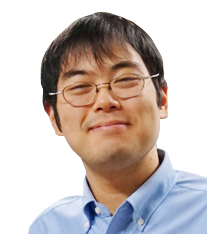
Assisitant professor
Institute of Engineering
Tokyo University of Agriculture and Technology
Outline
In nanocomposite materials derived from polymers and inorganic nanoparticles, understanding the relationship between microstructure (or their dynamics) and macroscopic properties at the trans-scale is important for the creation of innovative new materials. In this project, I will develop an in-situ transmission electron microscopy technique for “liquid” environment which is closer to a real system to obtain a molecular picture. This project aims at a systematic understanding of structure-property relationships in liquid samples by combining nanoscale information with macroscopic physical property analysis.
Kanami Sugiyama
Theoretical analysis of phase transition process of molecular crystals
Grant No.:JPMJAX24DA
Researcher
Kanami Sugiyama

Assistant Professor
Graduate School of Engineering
Kyoto University
Outline
The properties of molecular crystals depend on the crystal structure of the constituent molecules. It is important to elucidate not only the crystal structure but also the phase transition process. In this study, a new method to search for phase transition pathways based on a coarse-grained model is developed. Furthermore, the method is applied to analyze the mechanism of mechanochromism, in which the crystal structure changes in response to mechanical stimuli.
Izumi Takahara
Generative Materials Design through Deep Learning Multi-Scale Property Correlations
Grant No.:JPMJAX24DB
Researcher
Izumi Takahara

Graduate student
Graduate School of Engineering
The University of Tokyo
Outline
Understanding the correlation between functional properties at the macroscale and local properties emerging at the nanoscale is considered to be effective for materials design. This research aims to develop a model for the generative design of crystal materials by utilizing deep learning to capture the complex correlations between properties at these different spatial scales within the framework of generative models.
Yuta Takemasa
Non-bonding π conjugation: Unraveling Through-Space Conjugation
Grant No.:JPMJAX24DC
Researcher
Yuta Takemasa
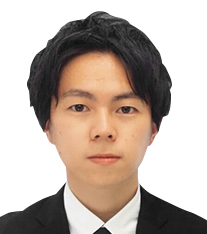
Assistant Professor
Graduate School of Arts and Sciences
The University of Tokyo
Outline
The concept of “conjugation” has developed primarily through π-conjugated systems. In contrast, through-space conjugation without direct bonding remains underexplored. Understanding through-space conjugation is essential for achieving comprehensive control of electron systems at the macroscale, based on nanoscale molecular design. This research aims to construct through-space π-symmetric conjugated systems using lone pairs. High-throughput conductivity measurements will be employed to establish a “trans-scale” unified concept, bridging the nano- and macro-levels.
Haruki Nagakawa
Development of a nanoscale photoetching process for highly crystalline photocatalysts
Grant No.:JPMJAX24DD
Researcher
Haruki Nagakawa
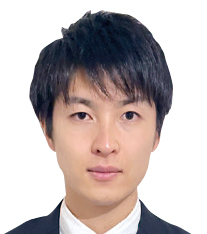
Assistant professor
Faculty of Applied Science and Engineering
Ibaraki University
Outline
Highly crystalline photocatalysts have fewer defects and distortions, which typically prevent carrier recombination. However, they tend to form relatively large particles in the submicron to micron range. As a result, the specific surface area is reduced, leading to disadvantages in substrate adsorption and carrier transport. To address this issue, this project aims to establish a nanoscale photoetching process for submicron-sized highly crystalline photocatalysts by utilizing the photocorrosion reaction, which has traditionally been considered undesirable.
Kazuma Nakajima
Polarized array design of ferroelectric nematic liquid crystal using polymer network with anisotropic shape
Grant No.:JPMJAX24DE
Researcher
Kazuma Nakajima
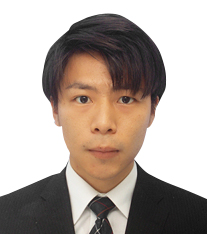
Assistant Professor
Graduate School of Engineering
The University of Osaka
Outline
Ferroelectric materials are essential in modern society, utilized in diverse applications such as actuators and sensors. Enhancing their functionality requires precise control of polarization domains. Ferroelectric nematic liquid crystals (NFLCs) combine ferroelectric properties with the fluidity and self-organization of liquid crystals. This study explores controlling the polarization domains of NFLCs using a polymer network with shape anisotropy, aiming to design domain arrangements. The ultimate goal is to develop advanced soft ferroelectric devices with tailored domain configurations, contributing to the improvement of ferroelectric material performance in various technological applications.
Naoki Nohira
Innovation of Methodologies for Controlling Twinning Deformation in Shape Memory Materials
Grant No.:JPMJAX24DF
Researcher
Naoki Nohira
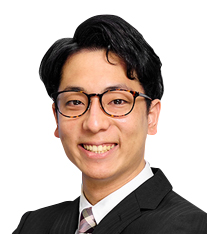
Assistant Professor
Institute of Integrated Research
Institute of Science Tokyo
Outline
Twinning deformation imparts various high functionalities, including the shape memory effect. This study focuses on titanium-based shape memory alloys where, despite no changes in crystal structure or microstructure due to low-temperature heat treatment, significant changes occur in macroscopic deformation behavior. By investigating this phenomenon, the aim is to identify nanoscale changes near twin boundaries that control the macroscopic alteration of twin boundary mobility. This approach attempts to understand twin boundary movement from a trans-scale perspective.
Tomoyuki Hirano
Trans-Scale Design of Particle Layers using Flames
Grant No.:JPMJAX24DG
Researcher
Tomoyuki Hirano

Assistant Professor
Graduate School of Advanced Science and Engineering
Hiroshima University
Outline
Advancements in science and technology have led to the development of numerous innovative materials. However, challenges such as difficulties in large-scale synthesis and reduced functionality within devices and systems remain significant obstacles. This research addresses these challenges by developing a trans-scale material design approach. This approach involves synthesizing materials through processes suitable for industrial-scale applications and employing a one-step method that seamlessly integrates material production with device fabrication, ultimately creating genuinely functional and innovative materials.
Tomoya Fukui
Construction of two-dimensional block perovskites by seeded co-crystallization
Grant No.:JPMJAX24DH
Researcher
Tomoya Fukui
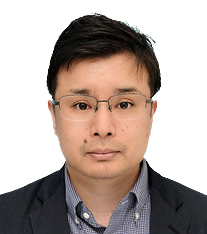
Assistant Professor
Institute of Integrated Research
Institute of Science Tokyo
Outline
Block structures composed of different materials are expected to exhibit properties that are not observed in single-component systems. Block structures would be motifs that embody the concept of trans-scale, translating events that occur at the molecular level into macroscopic events. In this study, I will establish a methodology for block co-crystallization of two-dimensional hybrid perovskites and explore the macroscopic electronic and optoelectronic synergistic functions induced by nano-hetero interfaces.
Ryota Fukuzawa
Development of innovative electronic material measurement and evaluation processes using atomic force microscopes
Grant No.:JPMJAX24DI
Researcher
Ryota Fukuzawa
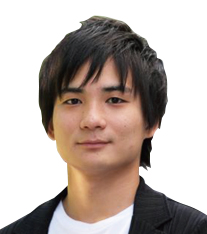
Assistant professor
Graduate School of Science and Technology
Nara Institute of Science and Technology
Outline
In this project, I approach the trans-scale understanding of electronic material properties from a nanoscale perspective. By employing atomic force microscopy with high spatial resolution, local analyses of electronic properties will be conducted by detecting the local force between a material and nanoprobe. Through the acquisition of various spectroscopic measurements of local electrostatic force on a global scale, spartial- and time-resolveed measurements will be performed, and I aim to achieve mutual understanding of nanoscale and macroscale properties.
Takao Fujikawa
Mathematical structural control of discrete self-assembly systems
Grant No.:JPMJAX24DJ
Researcher
Takao Fujikawa
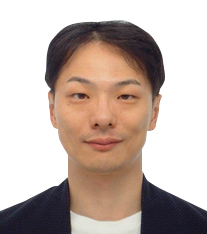
Program-Specific Researcher
Institute for Advanced Study
Kyoto University
Outline
Structures in which specific substances gather in an ordered manner and spontaneously form, like soap bubbles, are called ‘self-assemblies.’ Self-assemblies generally favor highly symmetrical, spherical structures, but this tendency limits structural diversity in material development. In this research, we aim to synthesize atypical discrete self-assemblies by combining the power of mathematics and chemistry, and to develop innovative materials by controlling transscale assembly phenomena.
Hayato Fujimoto
Creation of Carbon Materials by Controllable Arrangement of Arynes
Grant No.:JPMJAX24DK
Researcher
Hayato Fujimoto

Assistant professor
Graduate School of Engineering
The University of Osaka
Outline
Carbon materials consisting of aromatic rings linked in a geometric arrangement are attracting attention as fundamental materials in next-generation materials science due to their unique physical properties. In this research, I will establish a method for the creation of carbon materials by controllable arrangement of arynes.
Muneyuki Matsuo
Autonomous micropump
Grant No.:JPMJAX24DL
Researcher
Muneyuki Matsuo
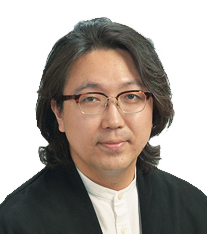
Assistant Professor
Graduate School of Integrated Sciences for Life
Hiroshima University
Outline
Conventional supramolecular devices have been designed and developed by focusing on the equilibrium state or transient process to the equilibrium state. In this study, we will formulate self-organized microdevices by applying the self-oscillation that emerges with self-organization under nonequilibrium condition. Specifically, we will develop an inorganic membrane that self-grows and self-divides recursively by a synergy between the formation of soluble membranes and stable membranes. The technology rooted in such autonomy of molecules and atoms is independent of constraints such as large and complex devices and external energy supply. It is expected to become an innovative technological platform that contributes to material saving and energy conservation.
Kentaro Matsumoto
trans-scale polymerization simulation approach to integrate nano- and meso-scale
Grant No.:JPMJAX24DM
Researcher
Kentaro Matsumoto
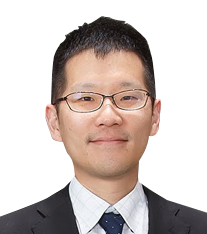
Assistant Professor
Graduate School of Informatics
Nagoya University
Outline
In chain shuttling polymerization (CSP) system, polymerization reaction and polymer exchange between catalyst molecules simultaneously proceed. To understand the reaction mechanism of such polymerization system, we need to bridge the two gaps, that is, time-scale gap between molecular motion and polymerization reaction, and the spatial-gap between the nano-scale catalyst molecules and their distribution in meso-scale space. In this project, therefore, I will develop a trans-scale polymerization simulation method that simultaneously overcomes these two gaps, and elucidate the reaction mechanism to propose a guideline for new CSP systems.













